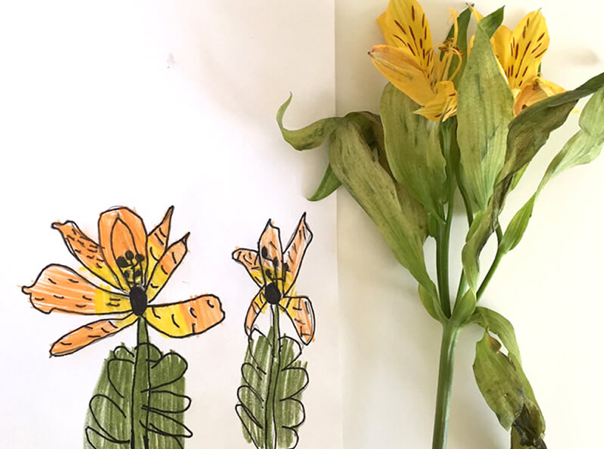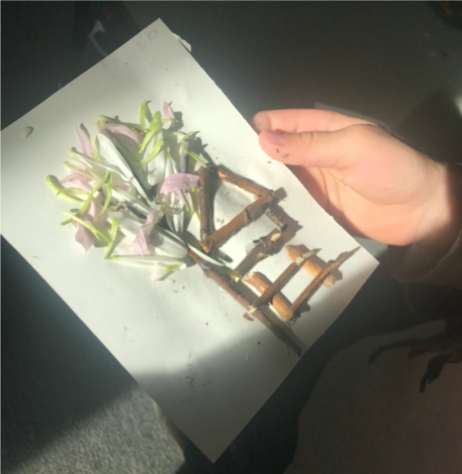The only thing that is certain in life is that it is uncertain. We can find comfort in this unpredictability by choosing to focus on what is actually within our control.
One way to find peacefulness in the uncertainty is by being more present - we can pause to find joy in the small things, especially during a season as lovely and inspiring as spring. Appreciating less is a good virtue to pass onto children as well, who are so often bombarded through the media and their peers about needing more stuff to be happy.
Throughout the busyness of our days and weeks, it is important to slow down, be still, and observe. Together with your child, you can try these mindfulness activities that align perfectly with spring, a time to notice how our earth revives itself and perhaps in doing so, we revive our spirits a little.
It’s also an opportunity to step away from technology and get outdoors, especially as the temperatures warm up. These activities can also become creative student assignments that offer flexibility and strengthen skills like observation, fine motor skills, planning, and visual spatial awareness.
Try it out:
1. Observational Drawing
Observational drawing is a key practice of the educational philosophy, Reggio Emilia. It involves captivating a child’s senses by noticing the details of an object and depicting it, starting traditionally with a black fine tip pen (although a pencil is fine) and then adding color. Children can be given a choice of materials to complete their drawing - paint, markers, etc. The key is to draw realistically and as true to life as possible, which of course takes practice like everything else. When a child is fully absorbed in this artistic work, they are fully present and mindful of the object they are zeroed in on.
Consider using these prompts to help kids draw what they see.
What colors do you notice? Shapes? Patterns? Shadow?
Remember to look back and forth between the object and the paper.
Try starting with the outline and then draw the inside details.
How big will you draw ____?
Where do you want to add that to your drawing?
2. Gather nature
On your walks around your neighborhood, find evidence of spring and use it in artwork. This was a class project from last year that involved gathering nature found on the ground (not from picking at live plants) and integrating it into a representation of seasons.
Spring and a tree house
While walking outside, together with your child you can activate your senses and think...
What colors do you see?
Does spring have a smell? What does it smell like?
How does the weather feel outside on your skin?
What kind of sounds are around you?
3. Photo walk
Take photos on a real camera (remember those?), an instant print camera (i.e. polaroids), or a phone if that is what’s available. Create a physical album or digital slideshow of the beautiful things that you notice around you and then share it with someone who will appreciate seeing the world through your eyes! Our observation of natural beauty can also bring joy to others.
While walking outside, together with your child you may want to try to…
Concentrate on the physical sensations of walking - the sights, the sounds, and the sensation of feet on the pavement.
Before you capture something, take the time to really see it up close. Take a break from movement and be still. Reflect on what is in front of you. Appreciate its beauty. How will you capture it with a camera?
4. Gardening
Nurture life through gardening. Whether you have a yard, small patio, balcony, or even a bright windowsill, you can try your hand at planting something beautiful or useful in the kitchen. Did you know that you can regrow vegetables from scraps, like lettuce, green onions, or basil just by sticking it in a glass of water? Google ‘regrow vegetables’ to find out more.
Regrowth of romaine lettuce
Regrowing Lettuce:
Cut the leaves about 2 inches from the bottom stump.
Place the stem end in a dish with about an inch of water.
Place it in a sunny spot and watch it grow!
Observing the daily growth in your home garden may help you find small doses of joy.
I hope these four ideas will bring some springtime mindfulness into your lives and a bit of joy. I am finding inspiration from the colorful species of hummingbirds that frequent my small balcony. Through the small things we still have to appreciate, like nature, we can aspire to be more present and share those values with the children we care for.
A prior version of this article was originally published on May 9, 2020.






